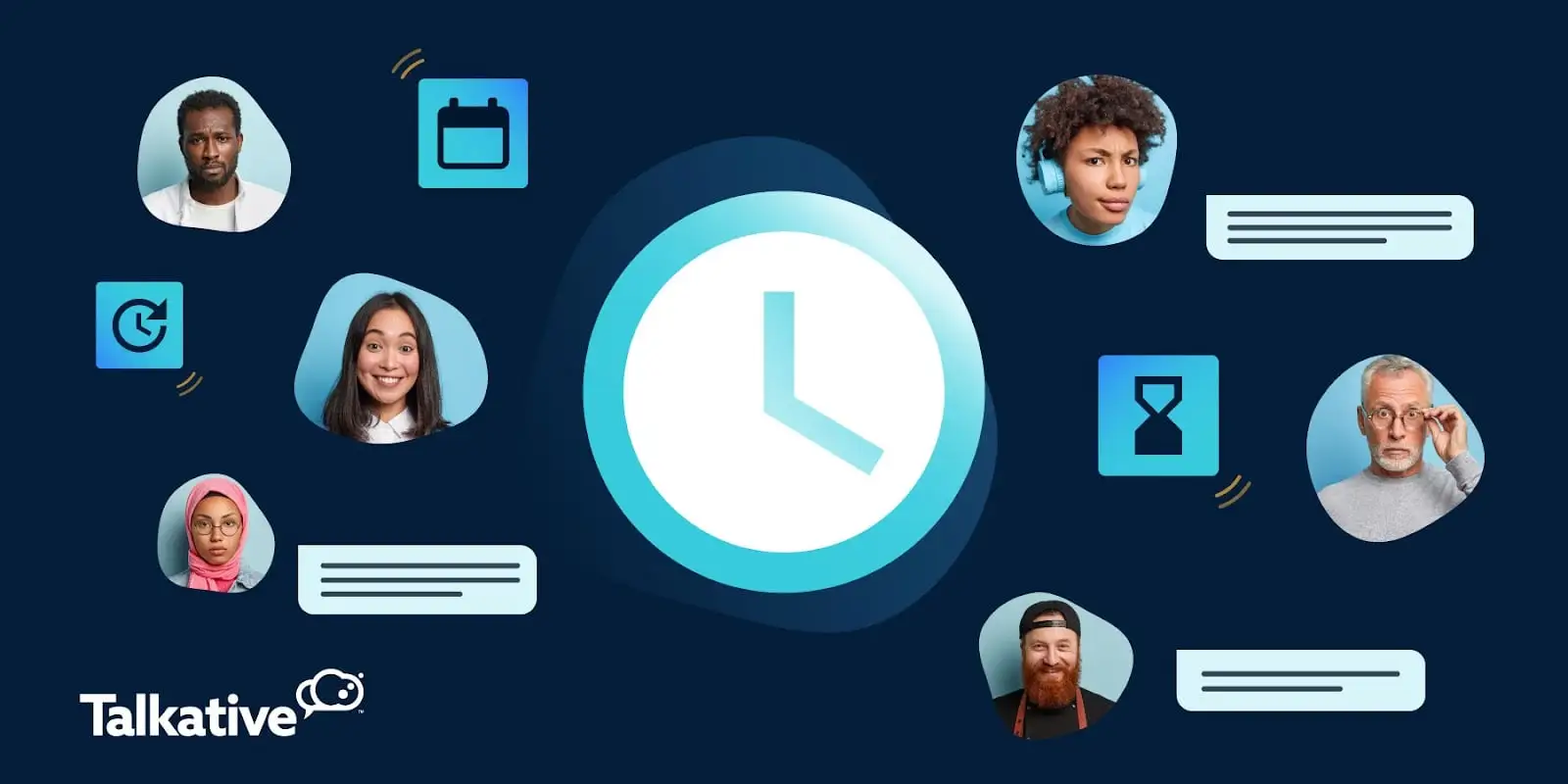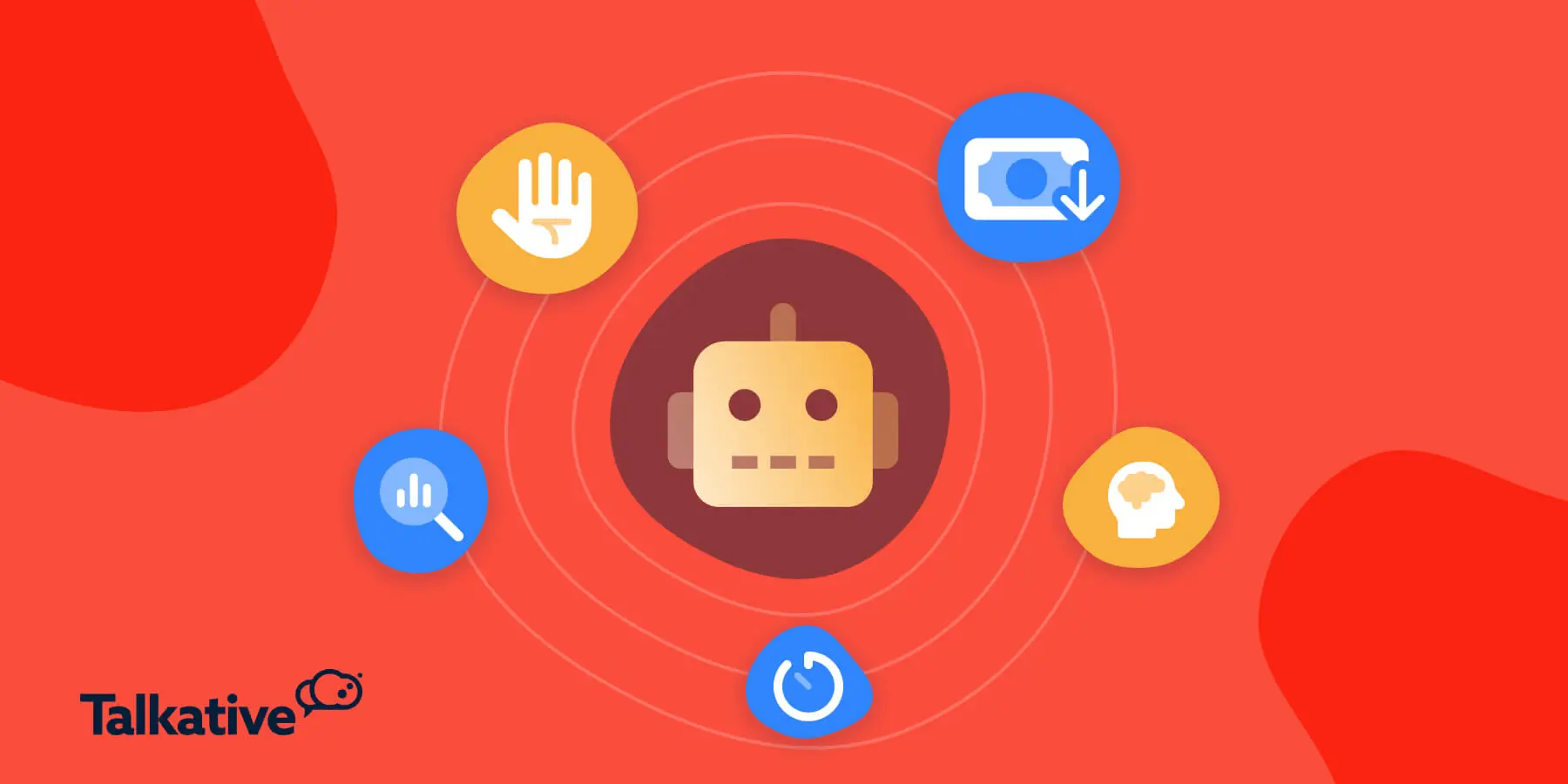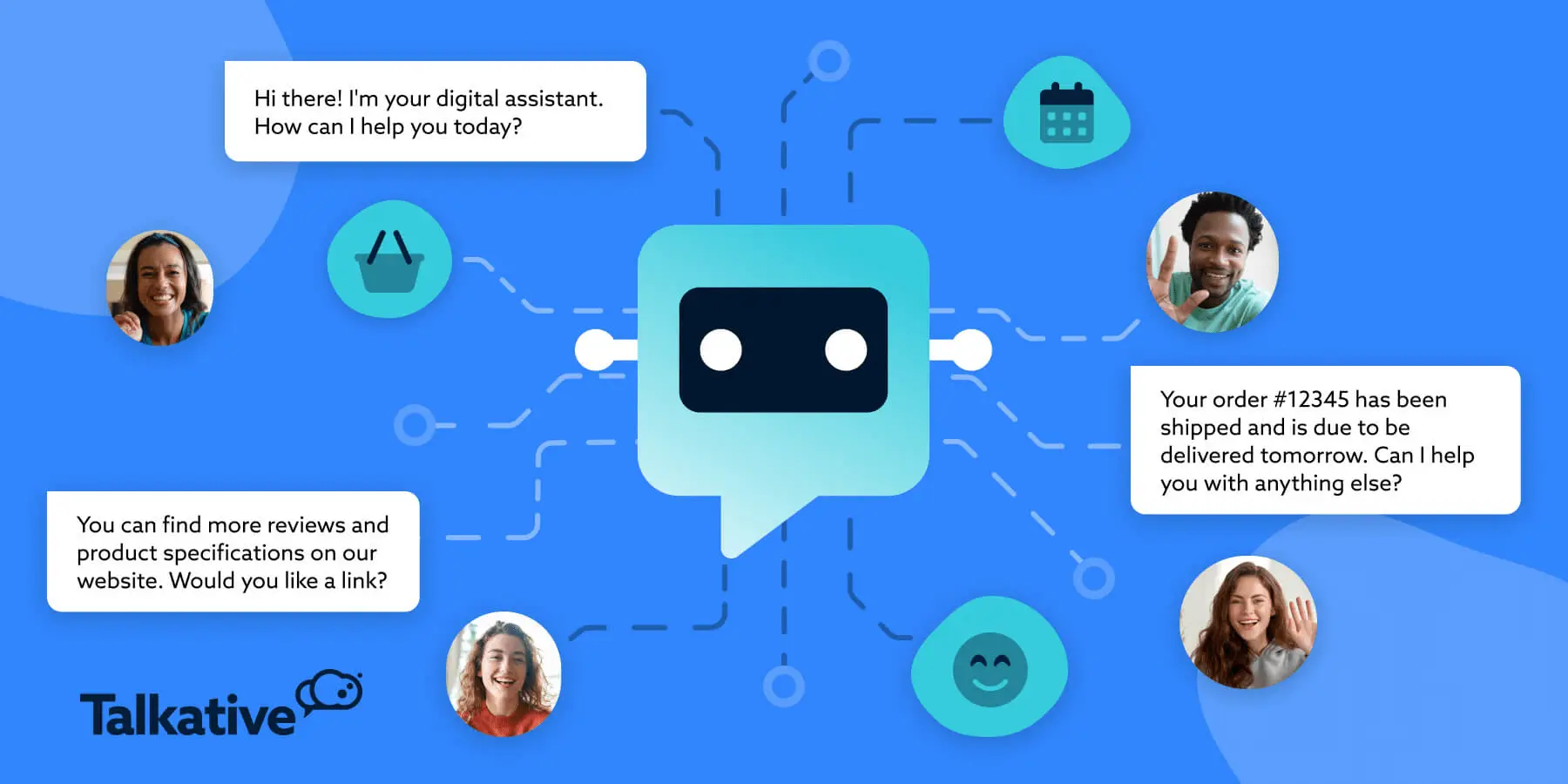There’s no question that chatbots are an extremely convenient and powerful self-service tool.
Not only can they reduce operational costs, but they can also save billions of customer service hours.
It's why 80% of businesses are expected to use some form of chatbot by the end of 2022.
But the question still remains...
Do customers actually like chatbots?
Well, it all boils down to how well your bot is set up within your business’s ecosystem.
In fact, if your chatbot is poorly designed or implemented, it can cause your company’s customer service reputation to decline rapidly.
With that in mind, businesses need to know how to use chatbots to enhance the customer experience, rather than hinder it.
In this article, we'll explore how to do just that. We’ll cover:
- The growing popularity of customer service chatbots
- Top use cases for chatbots
- How to make sure your customers love your chatbot

The growing popularity of customer service chatbots
Recent years have seen the popularity of customer service chatbots and artificial intelligence skyrocket.
In fact, chatbot usage among consumers has doubled since 2020.
This growing acceptance of bots represents an enormous opportunity for business leaders to leverage automated customer service and chatbot marketing.
However, the key to recognising this opportunity is all predicated on one key factor:
You need to make sure your chatbot is designed with your key audience and the customer experience in mind.
For instance, say you are looking to capitalize on foreign markets.
In that case, it’d be imperative to invest the time and energy to make the brand presence in these areas feel as native as possible.
To achieve this, you could implement a multilingual chatbot with real-time translation technology.
This capability will allow you to communicate with leads across the globe.
It will also make your chatbot a more widely accessible option for consumers than calling a support line.
Whichever markets or objectives you're looking to serve and work towards, deciding on your end goals can make your chatbot deployment all the smoother.
But most importantly for this discussion, it’ll also make your chatbot popular amongst your customers.

Chatbot use cases that improve customer satisfaction
Now that we’ve got a better understanding of the growing popularity of chatbot usage, let’s explore how they can improve the customer experience.
Below, we'll cover some of the top use cases for chatbots that contribute to increased customer satisfaction.

Handling customer queries fast
One of the things that customers like about chatbots is that they provide instant responses.
There’s no queue to wait for assistance and no lengthy articles that a customer has to wade through to find an answer.
This means that the consumers seeking instantaneous and convenient assistance are the ones most inclined to using chatbots.
With customer service bots automating interactions, human agents enjoy reduced workloads and more time for customers who need the human touch.
In fact, according to research, an AI chatbot can handle up to 80% of standard questions and routine tasks.
But what if your chatbot doesn’t deal well with a query?
Or what if your customer wants to speak to a human agent instead?
Thankfully, intelligent chatbot systems like Talkative’s can seamlessly transfer customers to a human agent.
It means you never have to worry about your customers reaching the end of a question chain without a resolution.
It’s another win for customer preferences and satisfaction.

Providing 24/7 support
One of the downsides to an ever-connected world is that many consumers expect support to always be available.
Gone are the days when customer service agents are simply “out of office.”
Chatbot technology provides a simple solution to this problem in the form of virtual assistants.
Unlike human agents, chatbots can be available 24/7, ready to assist customers at any time of day or night.
This is particularly valuable for international brands serving customers across various countries and time zones.
It also means your customers can always access assistance whenever they need it - even outside of regular business hours.
This is a clear win for customer relations and satisfaction.
And in cases outside operating hours when a chatbot can't resolve an inquiry?
The chatbot can escalate the case so that a human agent will follow up with the customer when your team is back online.

Improving efficiency through self-service
Some queries don’t demand as much of a personal touch as others.
In fact, there are scenarios where people would rather not talk to a human at all.
For instance, one area that’s benefited a lot from chatbot usage is the hospitality industry.
Users love the ability to make a reservation at a restaurant or hotel without the “hassle” that can come from talking to a human.
In these cases, customers don’t want added sales pressure or elongated wait times – they just want a straightforward transactional conversation.
Another industry that chatbot support thrives in is online retail.
Retail consumers are much more agreeable to using chatbots than just about anyone else - which is why you see so many popular ecommerce chatbots.
Customers like this kind of chatbot use because they smooth out the buying experience by automating the purchase process.
What’s more, they can provide added value with additional virtual shopping services (e.g. tailored product recommendations) and notifications.

The importance of your chatbot’s personality
As we’ve seen above, there are multiple ways chatbot capabilities can enhance the customer experience.
Still, despite their benefits, some consumers will be harder to win around than others.
Case in point, research shows that most customers still prefer human support over AI assistance - though the numbers are getting closer by the year.
But how can we close this gap even further?
How can we make sure that both your organization and your customers realize the benefits chatbots have to offer?
One strategy involves creating a bespoke, on-brand personality for your chatbot.
For example, if you're a quirky ecommerce brand that usually engages customers with an fun and upbeat tone of voice.
It follows that your chatbot should act in the same way, providing consistency to your customers brand experience.
So, to make sure you’re getting off to the best start with your chatbot’s personality, consider these tips:
- Understand your chatbot’s key purpose. What’s it going to be used for most frequently, and by whom?
- Take your brand image, language style, and tone of voice into account. What kind of experience do you want your customer to have?
- Remember your target demographic when deploying your chatbot. Which kind of customers will be using your bot most?
Once you’ve answered these questions, you’ll be all the more ready to create a chatbot personality that immediately appeals to your customers - whether it’s a no-nonsense generic bot or a characterful creation that promotes a fun image.
You should also strive to make your chatbots feel as human as possible.
MannequinMall does this really well by providing pictures of their customer service associates.

The takeaway: Using chatbots to improve customer service
Like all modern technology, chatbots are here to stay.
Although human agents will always be essential, there’s a range of use cases where chatbots offer significant benefits - both to customers and businesses alike.
That said, it’s important you choose the right chatbot solution for your brand.
One that both your customers and customer service teams will love.
That’s where Talkative comes in.
With our scalable and flexible chatbot solution, you can:
- Choose between a rule-based bot, AI chatbot, or a combined approach (an AI chatbot with rule-based fall-back for maximum efficiency).
- Integrate our Generative AI Chatbot with your own knowledge bases to create virtual assistants that are experts in your brand, products, and services.
- Automate customer interactions across your website, app, and messaging channels.
- Seamlessly escalate to a human agent when needed.
- Leverage AI-driven analytics and reporting.
- Build multiple chatbots in-house (if you prefer to take the wheel with bot design).
- Automate customer-specific queries with chatbot fulfilment.
In addition to chatbots and AI solutions, we offer a suite of customer contact channels and capabilities - including live chat, web calling, video chat, cobrowse, messaging, and more.
Book a demo with Talkative today, and check out our interactive product tour.
About the author
Vikas Kalwani is a product-led growth marketer and B2B Marketing Specialist skilled in SEO, Content Marketing, and Social Media Marketing. He manages partnerships at uSERP and is a mentor at 500 Global and Techstars.



